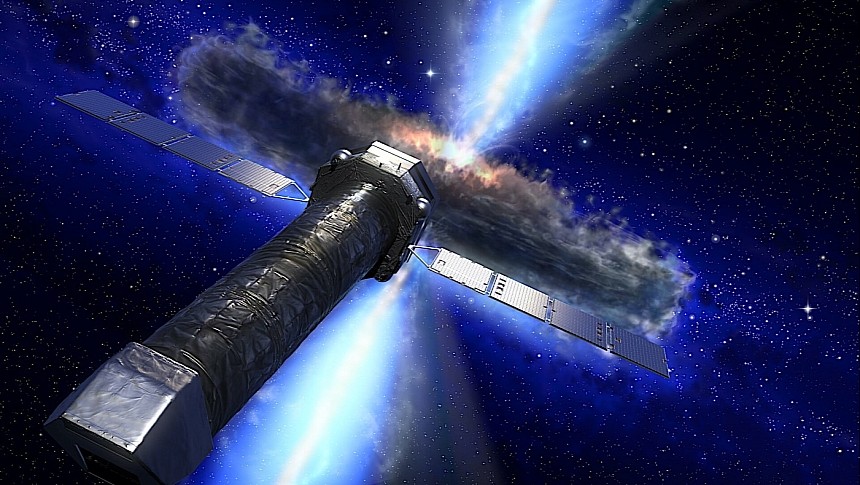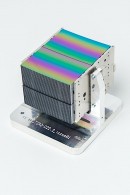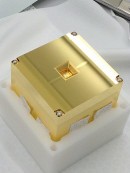Although the space missions that involve humans (read the Artemis program) steal the spotlight these days, it is the ones that have nothing to do with astronauts that will probably seriously advance our understanding of the Universe.
The last few years have seen a boom in the number of missions meant to study the Universe and its component parts. Most of the time they are centered around telescopes, because these are the main tools we use for such purposes.
The present-day highlight of the telescope world is without a doubt the James Webb, launched in late 2021. As the most expensive and powerful telescope ever devised, it has already turned astronomy on its head, and it certainly has the potential to upset the Hubble as the most relevant of its kind ever made.
But the near future brings with it even more exciting such technologies. We regularly talk about them here on autoevolution, trying to give you a glimpse into the instruments that could help our species evolve beyond the borders of our planet.
Today's treat is something called Athena. That's short for Advanced Telescope for High-ENergy Astrophysics and a major component of the European Space Agency's (ESA) plan of action for the coming years.
The purpose of Athena is to study the "hot and energetic Universe" in a bid to get a better understanding of some of the Universe's crucial processes: the ins and outs of how ordinary matter assembles into the structures the likes of galaxies and the mechanism through which black holes grow and affect their surroundings.
Athena is an X-ray telescope, but not just any such tool. It will be the largest of its kind ever made (snatching the title from Chandra), and its performance is expected to surpass that of any existing telescope by at least ten times. What that means is that it will be a lot better than everything else we have in terms of light-collecting area, survey speed, sensitivity, and spectroscopy.
The hardware will be built around three main instruments: the X-ray telescope itself is the first. It comes with a focal length of 12 meters (39 feet), which as per ESA is the "largest collecting area ever studied."
Then, an X-ray Integral Field Unit (X-IFU) will be used for high-spectral resolution imaging, and a Wide Field Imager (WFI) will be tasked with "moderate resolution spectroscopy over a large field of view."
There are two main missions Athena embarks on. The first is to map the hot gas in the Universe in a bid to determine its physical properties and evolution. This will help with understanding how matter comes together to form galaxies.
The Athena tools mentioned above will help the telescope look at gas that is millions of degrees hot, but also at particles moving at speeds close to that of light.
The second mission is to uncover accreting supermassive black holes from way back when the Universe was still young. The purpose of this one is to better understand how matter and energy flow in and out of these areas.
But Athena is more than the sum of its parts, and it will be used by astronomers to look at targets of opportunity almost as soon as they happen. That's something not many of our pieces of hardware are capable of doing, and it will likely heavily impact the way we understand our not-so-immediate surroundings.
We're promised that Athena will be able to respond to unexpected things (like supernovas) taking place in the sky (about half of all these celestial events, to be more precise) within four hours of their occurrence. It will also be able to track brief sources of awe, such as gravitational waves and neutrino events.
On top of that, this telescope will work in conjunction with the Laser Interferometer Space Antenna (LISA, scheduled for launch in 2035) piece of hardware. In fact a collection of three spacecraft that will work in tandem, LISA is meant to give us a better understanding of gravitational waves, which result from massive space objects the likes of black holes moving through space and causing ripples in space and time.
The Athena mission will be an open one for the astronomical community, an approach meant to ensure we learn as much as possible from its use. Hopes are it will "have a revolutionary impact on almost every corner of modern astrophysics," including the planets and stars of all kinds in our galaxy.
ESA targets Athena's launch for 2035, and plans to keep the mission running for at least four years (extensions are possible). The telescope will be placed, just like the James Webb, at a point of gravitational equilibrium in space to perform a halo orbit around the Sun-Earth Lagrange point 1 (L1).
From there the telescope will look at around 300 strong sources of X-rays per year, staring at each of them for about 28 hours. This will technically create a map of the hot gas in the Universe, but it should also reveal more about hundreds of black holes.
Every six days or so the telescope will focus on targets of opportunity, trying to take advantage of its ability to rapidly deploy to give us a much faster and potentially more revealing look at unexpected events such as gamma-ray bursts.
The telescope is not being built by ESA alone, as the American and Japanese space agencies, NASA and JAXA, are involved as well.
The present-day highlight of the telescope world is without a doubt the James Webb, launched in late 2021. As the most expensive and powerful telescope ever devised, it has already turned astronomy on its head, and it certainly has the potential to upset the Hubble as the most relevant of its kind ever made.
But the near future brings with it even more exciting such technologies. We regularly talk about them here on autoevolution, trying to give you a glimpse into the instruments that could help our species evolve beyond the borders of our planet.
Today's treat is something called Athena. That's short for Advanced Telescope for High-ENergy Astrophysics and a major component of the European Space Agency's (ESA) plan of action for the coming years.
The purpose of Athena is to study the "hot and energetic Universe" in a bid to get a better understanding of some of the Universe's crucial processes: the ins and outs of how ordinary matter assembles into the structures the likes of galaxies and the mechanism through which black holes grow and affect their surroundings.
Athena is an X-ray telescope, but not just any such tool. It will be the largest of its kind ever made (snatching the title from Chandra), and its performance is expected to surpass that of any existing telescope by at least ten times. What that means is that it will be a lot better than everything else we have in terms of light-collecting area, survey speed, sensitivity, and spectroscopy.
Then, an X-ray Integral Field Unit (X-IFU) will be used for high-spectral resolution imaging, and a Wide Field Imager (WFI) will be tasked with "moderate resolution spectroscopy over a large field of view."
There are two main missions Athena embarks on. The first is to map the hot gas in the Universe in a bid to determine its physical properties and evolution. This will help with understanding how matter comes together to form galaxies.
The Athena tools mentioned above will help the telescope look at gas that is millions of degrees hot, but also at particles moving at speeds close to that of light.
The second mission is to uncover accreting supermassive black holes from way back when the Universe was still young. The purpose of this one is to better understand how matter and energy flow in and out of these areas.
But Athena is more than the sum of its parts, and it will be used by astronomers to look at targets of opportunity almost as soon as they happen. That's something not many of our pieces of hardware are capable of doing, and it will likely heavily impact the way we understand our not-so-immediate surroundings.
On top of that, this telescope will work in conjunction with the Laser Interferometer Space Antenna (LISA, scheduled for launch in 2035) piece of hardware. In fact a collection of three spacecraft that will work in tandem, LISA is meant to give us a better understanding of gravitational waves, which result from massive space objects the likes of black holes moving through space and causing ripples in space and time.
The Athena mission will be an open one for the astronomical community, an approach meant to ensure we learn as much as possible from its use. Hopes are it will "have a revolutionary impact on almost every corner of modern astrophysics," including the planets and stars of all kinds in our galaxy.
ESA targets Athena's launch for 2035, and plans to keep the mission running for at least four years (extensions are possible). The telescope will be placed, just like the James Webb, at a point of gravitational equilibrium in space to perform a halo orbit around the Sun-Earth Lagrange point 1 (L1).
From there the telescope will look at around 300 strong sources of X-rays per year, staring at each of them for about 28 hours. This will technically create a map of the hot gas in the Universe, but it should also reveal more about hundreds of black holes.
Every six days or so the telescope will focus on targets of opportunity, trying to take advantage of its ability to rapidly deploy to give us a much faster and potentially more revealing look at unexpected events such as gamma-ray bursts.
The telescope is not being built by ESA alone, as the American and Japanese space agencies, NASA and JAXA, are involved as well.











